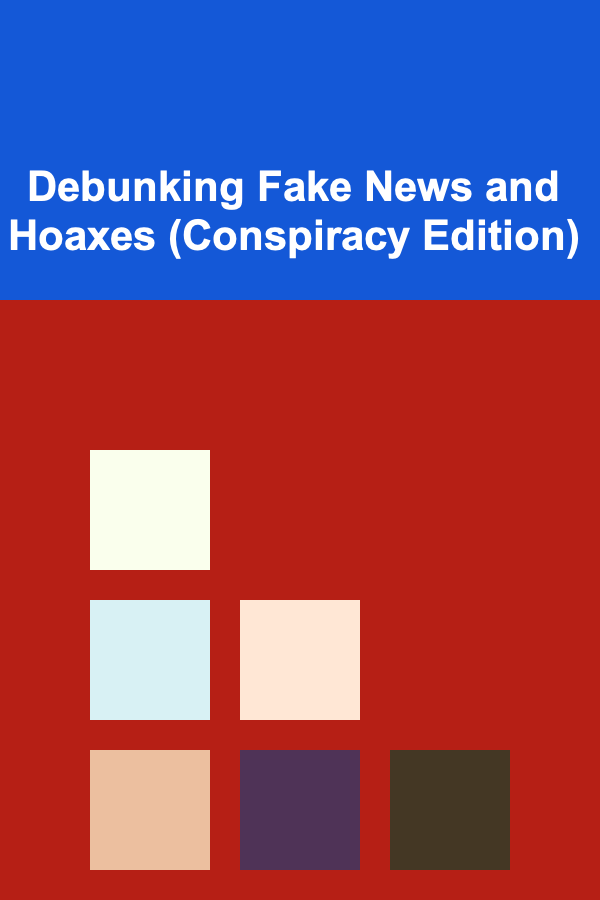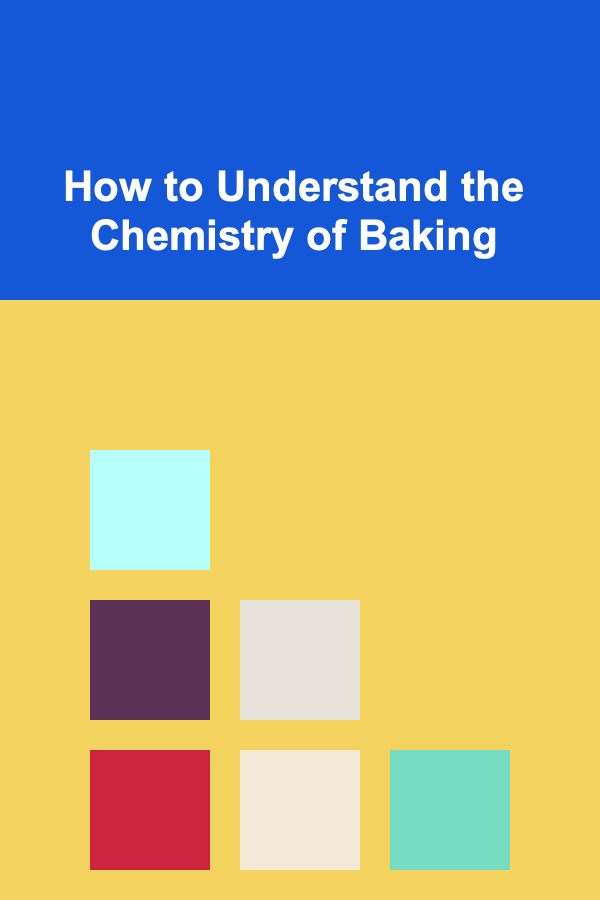
Debunking Fake News and Hoaxes (Conspiracy Edition)
ebook include PDF & Audio bundle (Micro Guide)
$12.99$9.99
Limited Time Offer! Order within the next:

In the modern age, the proliferation of information, while empowering, also presents significant challenges. One of the most pressing is the spread of fake news and hoaxes, particularly those disguised as or interwoven with conspiracy theories. These can range from seemingly harmless exaggerations to dangerous misinformation campaigns that erode trust in institutions, incite violence, and distort public understanding of critical issues. This article provides a comprehensive guide to identifying, analyzing, and debunking fake news and hoaxes, specifically within the context of conspiracy theories, equipping readers with the tools to navigate the complex information landscape and become more discerning consumers of news.
Understanding the Landscape: Fake News, Hoaxes, and Conspiracy Theories
Before diving into the methods of debunking, it's crucial to define the terms we're working with:
- Fake News: Deliberately false or misleading information presented as news. It's often designed to deceive and manipulate readers for political or financial gain. This doesn't include honest mistakes or biased reporting, although those can contribute to misperceptions.
- Hoaxes: Intentional deceptions designed to trick people, often for amusement or notoriety. Hoaxes can range from elaborate pranks to sophisticated scams.
- Conspiracy Theories: Explanations for events that posit secret, malevolent plots by powerful individuals or organizations. They often lack evidence and rely on speculation, conjecture, and reinterpretations of established facts.
The intersection of these three concepts is where things get particularly challenging. Fake news can be designed to reinforce existing conspiracy theories, hoaxes can be framed as evidence of conspiracies, and conspiracy theories themselves can evolve into elaborate hoaxes. The key is recognizing the underlying intent and the lack of credible evidence.
Why Conspiracy Theories Are Attractive
Understanding the psychological appeal of conspiracy theories is essential for effective debunking. People are drawn to them for various reasons:
- Sense-Making: Conspiracy theories offer simple, often emotionally satisfying explanations for complex or frightening events. They provide a narrative that helps individuals feel like they understand the world, even if that understanding is based on falsehoods. In times of uncertainty, a readily available explanation, however improbable, can be comforting.
- Distrust of Authority: Cynicism towards governments, institutions, and experts is a major driver. Conspiracy theories often paint these entities as corrupt, untrustworthy, and actively concealing the "truth." This resonates with people who feel disenfranchised or betrayed by established power structures.
- Need for Uniqueness: Believing in a conspiracy theory can make individuals feel special or "in the know." They believe they possess knowledge that others lack, creating a sense of superiority and belonging to an exclusive group.
- Cognitive Biases: Confirmation bias (seeking out information that confirms pre-existing beliefs) and pattern-seeking tendencies (finding connections where none exist) contribute to the acceptance of conspiracy theories.
- Social Reinforcement: Online communities and social media platforms amplify conspiracy theories by creating echo chambers where individuals are primarily exposed to information that supports their beliefs and reinforces their suspicions.
Debunking strategies must account for these underlying psychological factors to be effective. Simply presenting factual information is often insufficient to change deeply held beliefs.
Identifying Fake News and Hoaxes Within Conspiracy Theories
The first step in debunking is identifying the suspect information. Here's a checklist of red flags:
1. Examine the Source
- Website Domain: Is the website address reputable? Does it end in .com, .org, .gov, or .edu? Be wary of unusual domain names or those that closely resemble well-known organizations but with slight variations (e.g., cnn.co instead of cnn.com).
- "About Us" Page: Does the website have a clear and transparent "About Us" section? Does it identify the organization's mission, staff, and funding sources? A lack of transparency is a major red flag.
- Author Credibility: Who wrote the article? Are they an expert on the subject matter? Do they have a history of publishing accurate information? Be skeptical of anonymous sources or authors with a clear bias or agenda. A reverse image search of the author's photograph can sometimes reveal if it's a stock photo or associated with another, unrelated identity.
- Fact-Checking Policy: Does the website have a clear policy for fact-checking and correcting errors? Reputable news organizations have rigorous fact-checking processes in place.
- Reputation: Has the website been identified as a source of fake news or conspiracy theories by reputable fact-checking organizations? (See section on Fact-Checking Resources below).
2. Analyze the Content
- Sensational Headlines: Does the headline use emotionally charged language, excessive capitalization, or hyperbolic claims? Fake news often relies on sensationalism to attract clicks.
- Emotional Appeals: Does the article primarily appeal to emotions like fear, anger, or patriotism, rather than presenting factual evidence?
- Logical Fallacies: Does the article rely on logical fallacies, such as ad hominem attacks (attacking the person making the argument instead of the argument itself), straw man arguments (misrepresenting an opponent's argument to make it easier to attack), or false dilemmas (presenting only two options when more exist)?
- Lack of Evidence: Does the article make claims without providing credible evidence to support them? Are claims backed by verifiable sources? Be wary of vague attributions like "sources say" or "insiders claim."
- Manipulated Images/Videos: Are images or videos used out of context or manipulated to support the article's claims? Reverse image searches can often reveal the original source and context of an image. Tools can also detect deepfakes.
- Errors and Inconsistencies: Does the article contain grammatical errors, spelling mistakes, or factual inconsistencies? These can be signs of sloppy journalism or deliberate deception.
- Conspiracy Theory Tropes: Does the content rely on common conspiracy theory tropes, such as claims of a "secret cabal" controlling the world, suppressed technologies, or manufactured events?
- Calls to Action (Especially Extreme Ones): Does the content urge readers to take immediate, often extreme, action based on the presented information? This could be a sign of manipulation.
3. Consider the Intent
- Political Agenda: Does the article promote a specific political viewpoint or attack a particular political figure or party?
- Financial Gain: Is the website trying to sell something or generate revenue through clicks and advertising?
- Disinformation Campaign: Is the article part of a larger effort to spread misinformation or propaganda?
- Satire vs. Reality: Could it be satire presented as real news? While satire has a place, it can sometimes be misinterpreted, particularly by those unfamiliar with the source.
Debunking Strategies: A Multi-Pronged Approach
Once you've identified a potential instance of fake news or a hoax, the next step is to debunk it. This requires a strategic and nuanced approach:
1. Fact-Checking and Verification
This is the most crucial step. Use reliable fact-checking resources to verify the claims made in the article.
- Reputable Fact-Checking Websites: Websites like Snopes, PolitiFact, FactCheck.org, and Reuters Fact Check are dedicated to debunking false and misleading information. They provide detailed analyses of claims, citing evidence and sources.
- Mainstream Media Outlets: Consult reputable mainstream media outlets for their coverage of the event or issue. Compare their reporting with the claims made in the suspected fake news article. Look for corroborating evidence and alternative perspectives.
- Academic Research: If the article touches on scientific or academic topics, consult peer-reviewed research papers and scholarly articles to verify the claims.
- Government and Official Sources: For claims related to government policies or official events, consult official government websites and documents.
- Reverse Image Search: Use Google Images, TinEye, or other reverse image search tools to trace the origin of images and videos used in the article. This can help identify manipulated or out-of-context content.
- Video Authenticity Tools Programs exist that analyze videos to determine if they've been manipulated. Be wary of any videos claiming to show unbelievable events if the source isn't incredibly reliable.
2. Exposing Logical Fallacies
Conspiracy theories often rely on flawed reasoning. Identify and expose the logical fallacies used in the article.
- Ad Hominem: Point out when the argument focuses on attacking the person making the claim rather than addressing the claim itself.
- Straw Man: Show how the article misrepresents the opposing viewpoint to make it easier to attack.
- False Dilemma: Explain that there are more than just two options available, even if the article presents only two.
- Appeal to Emotion: Highlight how the argument relies on emotional appeals instead of factual evidence.
- Correlation vs. Causation: Emphasize that correlation does not equal causation. Just because two things happen at the same time doesn't mean that one caused the other.
- Anecdotal Evidence: Explain that anecdotal evidence (personal stories) is not a substitute for scientific evidence.
- Burden of Proof: Remind people that extraordinary claims require extraordinary evidence. The burden of proof lies with the person making the claim, not with those who doubt it.
3. Presenting Alternative Explanations
Offering a more plausible and evidence-based explanation for the event or issue can be highly effective.
- Scientific Explanations: For claims that contradict scientific principles, provide clear and accessible explanations of the relevant scientific concepts.
- Historical Context: Provide historical context to help understand the event or issue in its proper perspective.
- Multiple Factors: Explain that most events are complex and result from a combination of factors, rather than a single, malevolent plot.
- Occam's Razor: Apply Occam's Razor, which states that the simplest explanation is usually the best. The conspiracy theory is likely more complex and requires more leaps of faith than the more straightforward explanation.
4. Addressing Psychological Needs
Remember why people are drawn to conspiracy theories in the first place. Address those needs directly.
- Acknowledge Uncertainty: It's okay to admit that some things are uncertain or that there are no easy answers. This can be more comforting than a false sense of certainty provided by a conspiracy theory.
- Emphasize Agency: Instead of focusing on powerful figures controlling events, highlight the role of individuals and communities in shaping the world.
- Promote Critical Thinking: Encourage people to question everything, including your own arguments.
- Show Empathy: Recognize that people holding these beliefs often do so out of genuine concern or fear. Approach the conversation with empathy and understanding, rather than condescension.
5. Communicating Effectively
How you communicate your debunking efforts is just as important as the information itself.
- Be Respectful: Avoid condescending or dismissive language. Treat the person you're trying to persuade with respect, even if you disagree with their beliefs.
- Focus on Facts: Stick to the facts and avoid personal attacks.
- Keep it Simple: Use clear and concise language. Avoid jargon and technical terms.
- Provide Evidence: Back up your claims with credible evidence from reputable sources.
- Ask Questions: Instead of simply telling someone they're wrong, ask them questions that encourage them to think critically about their beliefs.
- Be Patient: Changing someone's mind takes time and effort. Don't get discouraged if they don't immediately accept your arguments.
- Recognize Limits: Not everyone is open to persuasion. Sometimes, the best you can do is plant a seed of doubt and move on. Don't get drawn into endless, unproductive arguments.
- Use Visuals: Infographics, charts, and videos can be very effective at communicating complex information in an easily digestible format.
- Source Your Claims: Always provide links to your sources so that others can verify your information. This builds trust and credibility.
The Role of Social Media
Social media platforms play a significant role in the spread of fake news and conspiracy theories. Here's how to approach debunking on social media:
- Report Fake News: Use the reporting tools provided by social media platforms to flag fake news and misinformation.
- Share Fact-Checks: Share fact-checking articles and other resources that debunk the fake news.
- Engage Respectfully: Engage in respectful dialogue with people who share or believe in the fake news. Avoid personal attacks and focus on providing factual information.
- Be Mindful of Algorithms: Be aware that social media algorithms can create echo chambers, where you're only exposed to information that confirms your pre-existing beliefs. Seek out diverse perspectives and challenge your own assumptions.
- Consider Private Messaging: If engaging in public debates is unproductive, consider reaching out privately to individuals who seem open to a civil discussion.
Tools and Resources for Debunking
Here are some valuable tools and resources for debunking fake news and hoaxes:
- Fact-Checking Websites:
- Snopes (snopes.com)
- PolitiFact (politifact.com)
- FactCheck.org (factcheck.org)
- Reuters Fact Check (reuters.com/fact-check)
- The Associated Press (apnews.com/hub/ap-fact-check)
- Reverse Image Search Tools:
- Google Images (images.google.com)
- TinEye (tineye.com)
- Video Verification Tools (require specific expertise and are often subscription-based):
- InVID & WeVerify (invid-project.eu)
- Media Bias Check: Media Bias/Fact Check (mediabiasfactcheck.com) assesses the bias and factual accuracy of news sources. While not definitive, it can provide a useful starting point.
- Browser Extensions: Several browser extensions help identify fake news and misinformation. (e.g., NewsGuard).
Conclusion: A Call to Critical Thinking
Debunking fake news and hoaxes, particularly those embedded within conspiracy theories, is an ongoing and essential task. It requires a combination of critical thinking skills, research abilities, and effective communication techniques. By understanding the psychological factors that make conspiracy theories appealing, recognizing the red flags of fake news, and utilizing the tools and resources available, we can become more discerning consumers of information and help combat the spread of misinformation. This isn't just about correcting errors; it's about safeguarding truth, preserving trust in institutions, and fostering a more informed and engaged citizenry. The responsibility falls on each of us to be vigilant, to question everything, and to actively seek out reliable information.
Remember: The fight against misinformation is a marathon, not a sprint. Stay informed, stay critical, and stay engaged.
Reading More From Our Other Websites
- [Mindful Eating Tip 101] From Plate to Microbiome: A Mindful Approach to Balancing Gut Bacteria
- [Home Maintenance 101] How to Clean and Care for Your Home's Air Vents and Ducts
- [Home Security 101] How to Prevent Burglary Using Neighborhood Watch Programs
- [Home Budget 101] How to Reduce Grocery Costs Without Sacrificing Quality
- [Home Budget Decorating 101] How to Update Your Kitchen on a Budget with Simple Decor
- [Organization Tip 101] How to Declutter Your Email Inbox for Better Focus
- [Personal Investment 101] How to Choose the Best Financial Podcasts for Investment Insights
- [Screen Printing Tip 101] Creative Hacks: Turning Everyday Items into a Press-Free Screen Printing Setup
- [Home Budget Decorating 101] How to Display Your Collections Beautifully Without Spending a Fortune
- [Home Budget Decorating 101] How to Implement Inexpensive Ways to Hide Clutter and Maximize Style in Any Room

Creating Passive Income Streams by Building AI Solutions
Read More
How to Create a Family Game Night with Budget-Friendly Games
Read More
How To Interact with Children in Different Cultures
Read More
How to Set Up a Checklist for Email Campaign Calendar Planning
Read More
How to Understand the Chemistry of Baking
Read More
How To Identify Constellations in Both Hemispheres
Read MoreOther Products

Creating Passive Income Streams by Building AI Solutions
Read More
How to Create a Family Game Night with Budget-Friendly Games
Read More
How To Interact with Children in Different Cultures
Read More
How to Set Up a Checklist for Email Campaign Calendar Planning
Read More
How to Understand the Chemistry of Baking
Read More